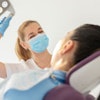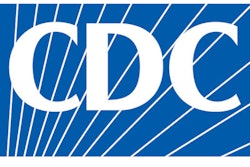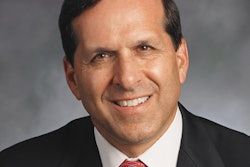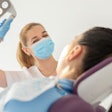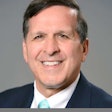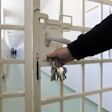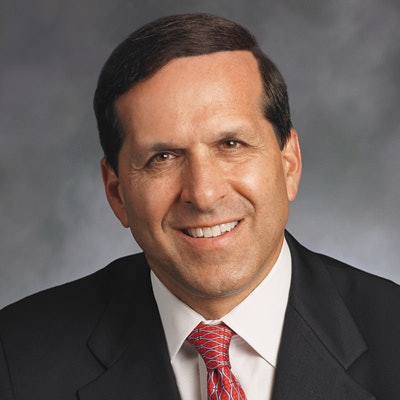
The recession of 2008-2009 or, as it's more commonly called, the Great Recession was the longest and deepest in U.S. history -- until now. While we don't know if the recession that will follow the COVID-19 crisis will be longer than the Great Recession, predictions are that it will be deeper at least for a while. Practices that are preparing today for the recovery phase following this crisis (which we believe will require approximately six months for most practices to get back to 70% to 80% of traditional revenue) will move through the turnaround phase faster and better.
However, we already know that it will not be back to business as usual. We don't have any specific events in modern history to use as a comparative because this is an unprecedented event, but there are some things we can learn in history and lessons from the Great Recession.
The history: Recessions happen on a regular basis
 Roger P. Levin, DDS, is the executive founder of the Dental Business Study Clubs.
Roger P. Levin, DDS, is the executive founder of the Dental Business Study Clubs.Still, somehow, they seem to take us by surprise. After each recession, it's as if our collective memory was erased and we start to develop a level of optimism that continues to grow. That optimism often turns into investment, borrowing, debt, and expansion that all look wonderful in the good times but are either not sustainable or even affordable in the bad.
One of the reasons that dental practices have not paid attention to the reality that recessions occur on a regular basis is that dental practices had previously been thought of as recession-proof. Until 2008, dentists' portfolios may have been affected by other recessions, but practices continued to produce at the same level or even higher.
The Great Recession changed all of that. According to the Levin Group Data Center, the data collection arm of Levin Group, 75% of dental practices declined between 2008 and 2012 and the bounce back was typically in a 1% to 2% range. Since then the economy has improved greatly, as has optimism. Practice purchasing activity levels, practice debt, higher student loan debt, etc., will all put significant pressure on dental practices in the recovery phase from the COVID-19 crisis.
The lesson: Dentists (especially practice owners) should always keep recessions in mind
Recessions will occur and they don't always announce themselves. Although this coronavirus crisis is an unprecedented event, it is still an event that has led to a recession. Practices need to be careful in the future how much debt or expansion takes place all at one time. Just because the bank will loan you money does not mean that it is a good idea to capitalize on it if a recession may be on the horizon (which it inevitably will be).
The history: Patients stop going to the dentist during recessions
In 2008, for the first time in U.S. dental history, we saw many financially challenged patients who made the decision that they could live without preventive services or dental care.
There were two types of financially challenged patients: Those who were truly challenged and those who simply didn't feel that they wanted to spend the money. When patients feel financial pressure, their definition of discretionary spending begins to change. Prior to the Great Recession, there was a significant trend toward more cosmetic and implant dentistry. When the 2008 recession hit, cosmetic dentistry immediately decreased and has never truly recovered the growth curve that it had prior to the recession. Dental implants, however, continued to grow even after the Great Recession, but they went from double-digit growth to as low as 1% to 2% growth for several years.
The lesson: Practices will need flexible financial options to help retain patients
A segment of patients will not be coming back to your practice soon, if ever.
There are two contributing factors, and one is a lesson we can learn from the Great Recession. The first factor is unique to this crisis -- patients who do not come back out of safety concerns for their health. It will take some time for these patients, especially those who are elderly or have underlying health conditions, to decide that it is safe to visit their dentists.
The second factor is one that all recessions have in common: patients who don't come back because they are financially challenged. To help combat this, practices will need to offer negotiated fees, new insurance plans, and payment plan options.
Please note that each practice is different, and we are being very careful not to make universal recommendations on fees, insurance plans, or payment options as these must be tailored to each office individually.
Let's start with fees. Reducing fees is not a pleasant thought, and it has never been recommended as practice management strategy. However, we are in unusual times and it may make sense to reduce fees for up to six months. Patients who accept treatment, even at reduced rates, will contribute more to revenue.
Another option that Levin Group does not typically recommend is payment plans. However, the first goal of a business turnaround is to cover overhead and the second is to return to profitability. Although payment plan defaults are a reality (approximately 10%), some level of contribution toward covering your overhead is far better than none.
Insurance participation is another financial aspect to consider. Before 2008, many dentists declared that they would rather retire than ever join insurance plans. But in the Great Recession when practice production declined, many dentists reversed course and began joining plans.
Today, we are expecting another round of practices enrolling in more plans. The difference now is that we have a much broader array of preferred provider organizations (PPOs) and plans that offer PPO-level reimbursements. This means lower reimbursement in real dollars versus what occurred in the Great Recession.
In the short term, this may benefit practices aiming to bring in revenue and retain patients who might otherwise leave practices. Patients will feel compelled to go to practices where the co-payment is lower. But the practice must remember that all new patients covered by those new plans will provide lower reimbursements to the practice. This is an analysis that each practice needs to make and make now. One big mistake that many practices made in the Great Recession was to simply run out and enroll in plans as a knee-jerk reaction to declining production without any analysis to understand the short- and long-term effects.
Back in the Great Recession, financial options barely changed as practices waited for a better economy to allow revenue to increase. This will not be the case with this current crisis. Practices will need to do more.
The history: Hygiene production will suffer for a six- to 12-month period and maybe longer
It did in the Great Recession, and we expect it to be deeper following the COVID-19 crisis. What's interesting is that at first most practices will have no idea about this because demand will be extremely high. The pent-up demand will have patients returning to the practice when it reopens to have their hygiene appointments. Many practices will be "busier than ever" and thinking that everything is back to business as usual, or maybe even better. You may have dentists bragging about how fast they recovered from the coronavirus crisis and how well they are doing -- for about two months. After that period, pent-up demand will end, the hygiene schedule will lighten up, and the true issues affecting practices will now be exposed.
This is an inevitable reality as practices will lose anywhere from 10% to 20% of their patients in the early phases due to safety and financial concerns. As one friend of mine who is a world traveler recently said, "It will be a long time until I get back on an airplane." And he wasn't referring to waiting for the COVID-19 crisis to end -- he was referring to a long time into the future. Many dental patients will feel the same way.
The lesson: The best course of action is to effectively manage the overdue patient list
Some practices are rescheduling patients as they go. Others are waiting until they get closer to opening so they don't have to reschedule patients two or three times. Whichever system you adopt, the key is to contact patients two weeks before reopening to encourage them to make appointments. Write scripting now that includes information on new safety measures, expanded financial options, and extended office hours. This will help decrease the number of patients who decide not to come back. It will also help let patients know about any national organizations that give their stamp of approval for patients to go back to their dentists. This is third-party proof and credibility.
The history: During the Great Recession, dental practices simply operated with highly inefficient systems
There was an assumption that things would get better. This was most likely because they did not have a business shutdown that required them to rethink how they operated day to day. And, although it took several years, things did better. After 2014, the economy was on fire and dental practices benefited. But practices are going to need a higher level of efficiency to maximize profitability in this more challenging postcoronavirus era. This is not to say that the economy will not bounce back or that practices will improve over time. However, dental practices that operate inefficiently will take much longer to turn around.
All practices will not simply bounce back over six to 12 months. We recommend that every practice analyze every aspect of its systems, eliminate unnecessary steps, and add innovative concepts that meet the demands of a business turnaround. This includes scheduling (which may need a complete overhaul to manage the new pent-up demand) and regulation, financial options, collections, marketing, customer service, case presentation, and dental hygiene. If systems are not addressed, practices will have higher overhead and take much longer to come back.
The lesson: Not streamlining and creating efficient systems in the Great Recession led to a significant production decline for many practices that took five to eight years to recover
Practices that do not streamline their systems following COVID-19 may end up with lower production and revenue indefinitely. This will come from a combination of patient loss, new regulations, patient financial challenges, and the possibility that dental insurers will lower reimbursements further to recoup some of their lost profits. Once reimbursements have been lowered, they don't tend to bounce back when the economy improves.
The history: Making drastic overhead cuts
As stated earlier, dental hygiene production will lighten up. In the Great Recession, this decrease in hygiene volume caused practices to release hygienists as a cost-cutting measure and some never reinstated those hygiene positions. However, the data were masked by the expansion of dental support organizations (DSOs), small group practices, and shifts in the market. The road back to recovery from the Great Recession was slow and steady, and practices built their hygiene departments back up accordingly. Eventually, dental hygienists were once again in reasonable demand.
The lesson: You can't always cut your way to success
Why? Because what works in one recession does not always work for another. This is a unique time. The COVID-19 crisis shut down everything all at once. We project that as many as 20% of the hygiene positions in the country may be eliminated as a short-term recovery strategy. But this crisis came about abruptly, and the restart may be as abrupt and confusing. When practices become operational again, there may be pent-up demand, mixed with new regulations, mixed with patient fear and confusion. This means that releasing hygienists might be the exact wrong strategic decision to make. Yes, overhead should be reduced for survival, but if overhead is reduced to bare bones levels, the turnaround will be much more difficult. Dental practices should be thinking about how to handle increased hygiene in the first few months following the COVID-19 crisis. This could mean using multiple rooms, adding extended hours, and hiring temporary hygiene assistants to increase patient rescheduling. Any or all these strategies will increase short-term revenue, which is essential in a practice turnaround.
Summary
The Great Recession of 2008-2009 is not an exact analogy to the COVID-19 crisis. At the time of this writing, we do not even know how long this crisis will last, as a nation or from state to state. However, there are lessons that can be learned from the last economic downturn, especially as it appears this economic downturn will be deeper. We also need to take innovative new steps to encourage patients to remain with the practice and even refer others. Use the lessons learned from the Great Recession to give you guidance on how to prepare for the recovery phase of the COVID-19 crisis.
Roger P. Levin, DDS, is the executive founder of the Dental Business Study Clubs. To contact Dr. Levin or to join the 40,000 dental professionals who receive his Practice Production Tip of the Day, visit www.levingroup.com or email [email protected].
The comments and observations expressed herein do not necessarily reflect the opinions of DrBicuspid.com, nor should they be construed as an endorsement or admonishment of any particular idea, vendor, or organization.

